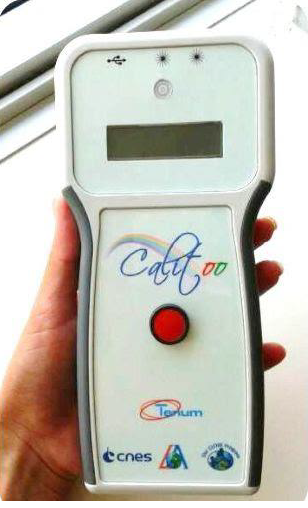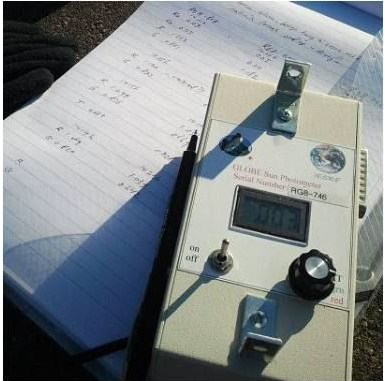Air Quality Instruments - Mission Earth
Air Quality Instruments
PM2.5 Sensors
PurpleAir sensors make measurements of PM2.5, in ambient air, in real time. Sensors are connected to the WiFi allowing data to appear on a public air quality map.
 You can access PurpleAir data from sensors in your region. Check the PurpleAir map to determine if there is a sensor near your location.
You can access PurpleAir data from sensors in your region. Check the PurpleAir map to determine if there is a sensor near your location.
If I have a PurpleAir sensor, how do I set it up?
- See Startup Guide for PurpleAir Sensors
- Connecting your PurpleAir Sensor to WIFI provides helpful trouble-shooting advice. Credit: The Institute for Tribal Environmental Professionals’ (ITEP) American Indian Air Quality Training Program (AIAQTP)
How do I collect data from PurpleAir?
-
In real-time, you can take screenshots of the PurpleAir map, zooming into locations of interest. This Sky Photo & PurpleAir Activity is a great way for students and community scientists to make observations that will inspire them to develop scientific questions to investigate.
You can also download past data from any of the sensors. See PurpleAir Data Download Instructions.
Build Your Own PM2.5 Sensor
Attention! If you are using a DIY sensor, you need to do data intercomparisons with a nearby PM2.5 sensor (such as an EPA monitor or PurpleAir) to determine whether or not your sensor collects reliable data.
Dr. David Brooks has written instructions for building an Arduino-based system for measuring PM2.5 concentrations. Components can be purchased online. Many educators use the Adafruit PM2.5 (Plantower 5003 series) Air Quality Sensor w/ Breadboard Adapter Kit. Plantower has several PM2.5 sensors available. The World Air Quality Index Project Team has done a comparison of Plantower’s 5003 & 7003 series sensors.
For engineering classes, students can build their own sensors. Students will then need to compare data from their DIY sensor to a nearby PM2.5 sensor for intercomparison and calibration as well as comparing to their peers' DIY sensors.
Sun Photometer Sensors

The Calitoo is a handheld sun photometer, an instrument that measures Aerosol Optical Thickness. Aerosol Optical Thickness, or AOT, determines how much the sunlight is being affected by PM2.5 in the column of air. The Calitoo determines AOT by first measuring the amount of sunlight transmitted through the atmosphere at three different wavelengths: blue (465nm), green (540nm) and red (619nm). The photometer then uses these values to calculate the AOT at these three wavelengths, which can not only provide information about the amount of aerosols present in the air locally, but the type of aerosols, as well.
Aligning the instrument with the Sun is done manually. It is facilitated by a sighting device located just above the display. The calculation of AOT (detailed in the user manual) is done by using the raw brightness measurement, calibration coefficients, date, GPS position and the atmospheric pressure.
For instructions on how to use Calitoo sun photometer, download the Users Manual.
To learn more about the device visit the Calitoo website.

You can also use a GLOBE sun photometer to measure Aerosol Optical Thickness, if you already have one. (These instruments are no longer available for purchase.) This sun photometer measures the maximum amount of sunlight transmitted through the atmosphere at two different wavelengths: green (505nm) and red (625nm). This is measured by the instrument as a voltage. Like the Calitoo, the instrument needs to be aligned with the Sun manually; this is done by using the metal sights attached to the top and bottom of the device. However, the values of AOT are not calculated automatically by the instrument; this is done when the data from the instrument are entered through the GLOBE data entry page.
For instructions on how to use GLOBE sun photometer and calculate AOT please refer to the GLOBE Aerosols Protocol and Field Guide.
You can also build your own sun photometer! An outline of how to get started is available. Attention! DIY sun photometers must be calibrated against a reliable instrument before you can begin collecting data. To do this, using a nearby AERONET or a sun photometer that is already calibrated is recommended.
(No endorsement intended)





